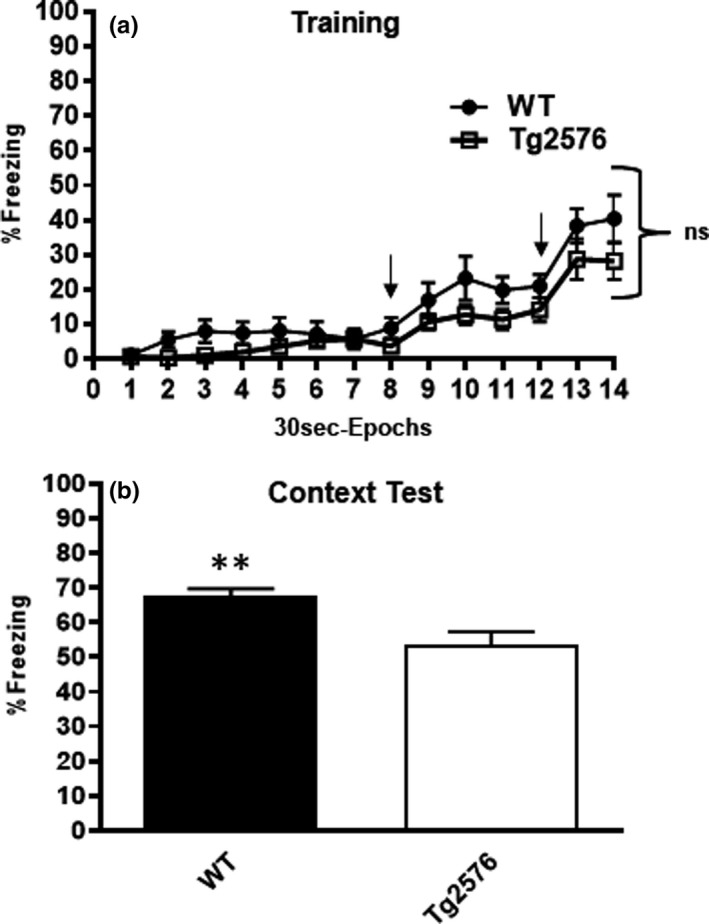FIGURE 5.

Tg2576 AD mice exhibit deficits in foreground contextual fear conditioning compared with age‐matched controls. Performance in foreground training (a) and contextual test 24 hr later (b). During training, both groups explored the novel context equally, while freezing begins to increase after each aversive stimulus at 240 s and 360 s, as indicated by arrows. Repeated‐measures two‐way (30 s epochs × genotype) ANOVA of freezing behavior during the 7‐min training session detected no difference in freezing behavior between the two genotypes [F(1,31) = 3.4; p = .075]. However, there was a significant epoch effect in that freezing increased following the first and second footshock [F(3.316,102.8) = 29.8; p < .0001]. 24 hr later, both groups were placed back into the training chamber to measure freezing to the shock context as a proxy for contextual fear memory. 9MO Tg2576 mice froze significantly less than WT littermates (p = .307; unpaired two‐tailed t test)
